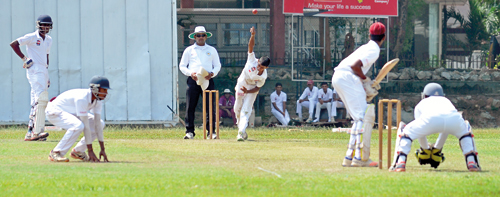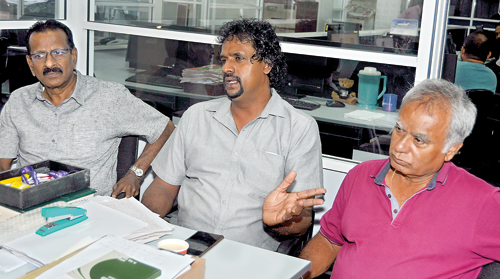Major changes to school cricket format from this season
Sri Lanka’s school cricket format from Under (U)-13 to First XI age groups will go through some quantum changes from the forthcoming season. This came as a result of the three-year pilot project mooted by the Education Ministry.
 The U-13 and U-15 cricket will revert to the 4 3/4oz ball from the 5 1/2oz senior ball that has been used for almost the past two decades in junior cricket.
The U-13 and U-15 cricket will revert to the 4 3/4oz ball from the 5 1/2oz senior ball that has been used for almost the past two decades in junior cricket.
At the same time, the number of matches for the senior season will be strictly limited to 15+1 matches, as the case may be. During the coming season which is to begin in two weeks, the new rules will come into effect. Accordingly, a school will be given a chart of playing eight matches which are considered tournament matches, while the balance seven could be treated as traditional/friendly matches. The top division tournament matches must be played on turf strips. However, points for the games will be given only for tournament matches played during the season.
Explaining the changes to the Sunday Times were Jayantha Seneviratne who is the head of the programme, Carlton Bernadus who is in charge of driving the programme, and Sri Lanka Schools Cricket Association (SLSCA) Secretary Dilshan de Silva.
De Silva who served as a Junior Cricket Selector in several instances said that reverting to the old system of playing junior cricket with the junior ball is going to be futuristic. He explained that, for the past 20 years or so, Sri Lanka has not produced an effective off-spinner. The reason being the 5 1/2 oz ball is not user friendly for the U-13 and U-15 cricketers. It is too heavy and not easy to grip. As a result, Lankans spinners got used to rolling the ball, instead of spinning it. Then, even the seam bowler found it difficult to hit the seam on the deck, also because of the gripping problem. It was also pointed out that the heavier balls made the junior cricketers more prone to injury. Another drawback of operating with the senior ball is that young cricketers tend to throw the ball while bowling to gain more purchase. The end result of this was that, in the past few U-19 World Cups, Sri Lanka has used spinning all-rounders, instead of genuine off-spinners.
The other change in junior cricket is that, they would play one-day matches instead of limited-overs matches. The experts who assisted the panel, included Mahela Jayawardena, Sidath Wettimuny, Muttiah Muralitharan and Roshan Mahanama, felt it would help junior cricketers to get used to playing longer innings in their formative years. The panel also revealed that junior cricketers also find it easy batting with a lighter bats, when facing up to the lighter balls. This means it would help in their technique also.

Dilshan de Silva (Centre) points out a fact while being flanked by two cricket stalwarts -- Jayantha Seneviratne (L) and Carlton Bernadus (R) - Pic by Ranjith Perera
De Silva then explained about the senior format. He said, “Though we had mentioned there would be 13 First XI matches during the season, most teams went on to play almost 20 matches during the season. Now that system has been done away with. Now a school can play up to 15 matches during the season — eight tournament matches and seven traditional/friendly matches. Also, there is the option of schools playing their Big-Matches, which would be their 16th game for the season. However, the top division tournament matches have to be played on turf. We have counted that of the 32 top division schools, 22 schools have turf wickets. Then, once the league tournament is over, they would move to the knockout (KO) tournament, for the Championship. However, the four top teams in the league tournament will draw byes to the quarterfinal stage during the knockout tournament. And all First XI matches will end before the National New Year school holidays in April.”
The panel emphasised that the purpose of this exercise is to streamline school cricket from the junior stages, and to have a well-structured season. However, they still have a problem in releasing school cricketers for the SLC organised Provincial Tournament, which begins at the end of the regular school season. They feel that taking part in the Provincial Tournament is a must but, at the same time, they must be mindful of too much cricket and player burnout.


